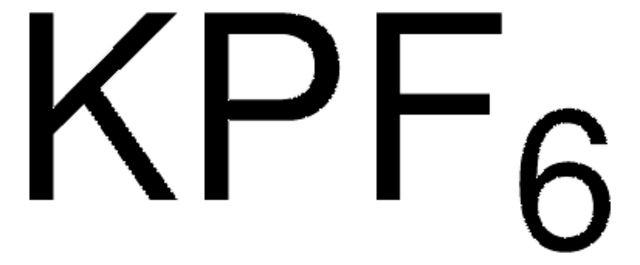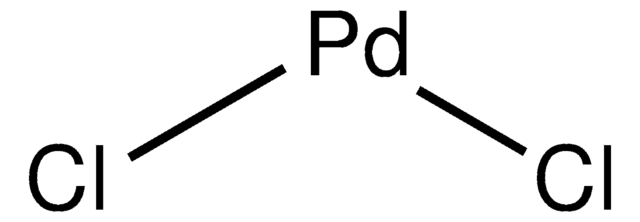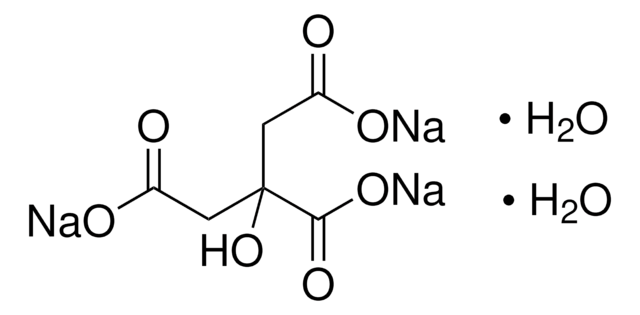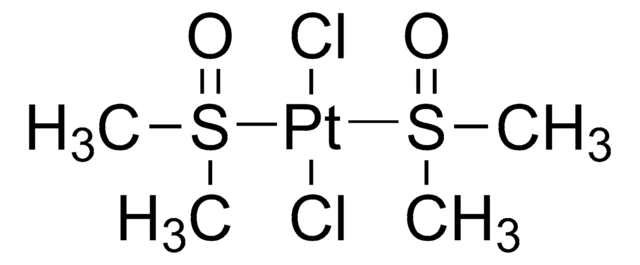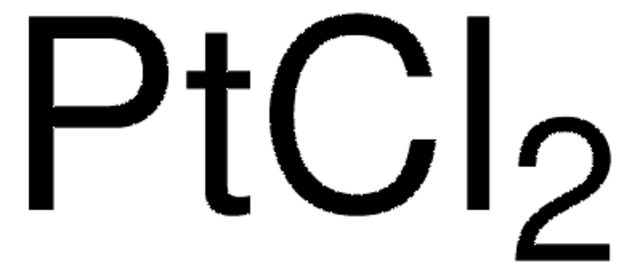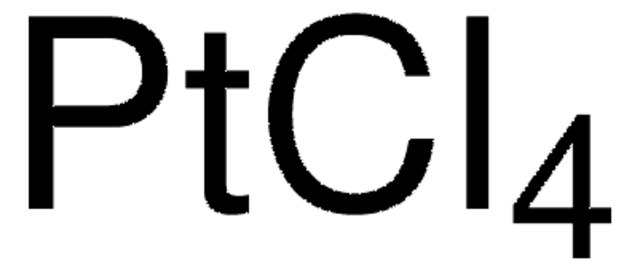520853
Potassium tetrachloroplatinate(II)
≥99.9% trace metals basis
Synonym(s):
Potassium platinum(II) chloride
About This Item
Recommended Products
Quality Level
assay
≥99.9% trace metals basis
form
powder or crystals
composition
Pt, ≥46.2%
impurities
≤1000.0 ppm Trace Metal Analysis
density
3.38 g/mL at 25 °C (lit.)
SMILES string
[K+].[K+].Cl[Pt--](Cl)(Cl)Cl
InChI
1S/4ClH.2K.Pt/h4*1H;;;/q;;;;2*+1;+2/p-4
InChI key
RVRDLMCWUILSAH-UHFFFAOYSA-J
Looking for similar products? Visit Product Comparison Guide
Related Categories
General description
Application
- As a precursor to prepare platinum nanoparticles and mesoporous platinum nanospheres with tunable pore sizes.
- As a catalyst for selective methane oxidation through C-H activation. In addition, to synthesize octahedral Pd@Pt1.8Ni nanocrystals with an ultrathin PtNi alloy shell. The nanocrystals exhibited better ORR activity and durability than the commercial Pt/C for fuel cells.
- To prepare Pt atomic clusters were synthesized using a one-step carbon-defect-driven electroless deposition method. These catalysts demonstrated low overpotential, high activity for the hydrogen evolution reaction, exceptional stability, and improved utilization efficiency of Pt. The Pt-AC/DG (Atomic Clusters/Defective Graphene) cathode showed excellent hydrogen production activity, remarkable stability, and significantly reduced Pt usage compared to the Pt/C catalyst.
- As a starting material to synthesize cyclometalated platinum(II) complexes with long-lived luminescence in solution.
Features and Benefits
signalword
Danger
Hazard Classifications
Acute Tox. 3 Oral - Eye Dam. 1 - Resp. Sens. 1 - Skin Irrit. 2 - Skin Sens. 1
Storage Class
6.1C - Combustible, acute toxic Cat.3 / toxic compounds or compounds which causing chronic effects
wgk_germany
WGK 1
flash_point_f
Not applicable
flash_point_c
Not applicable
ppe
Eyeshields, Faceshields, Gloves, type P2 (EN 143) respirator cartridges
Certificates of Analysis (COA)
Search for Certificates of Analysis (COA) by entering the products Lot/Batch Number. Lot and Batch Numbers can be found on a product’s label following the words ‘Lot’ or ‘Batch’.
Already Own This Product?
Find documentation for the products that you have recently purchased in the Document Library.
Customers Also Viewed
Our team of scientists has experience in all areas of research including Life Science, Material Science, Chemical Synthesis, Chromatography, Analytical and many others.
Contact Technical Service
